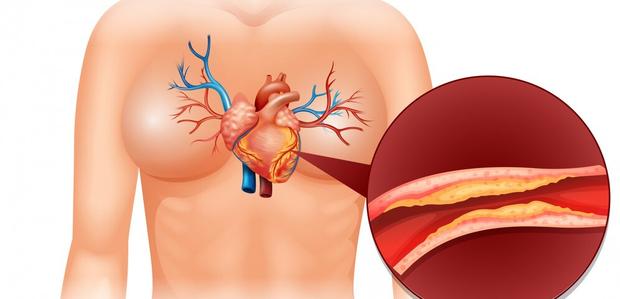Department of Vascular And Endovascular Surgery

Vascular and Endovascular Surgery involves intervention in the blood vessels including wall repair, removal of blockage, and reconstruction. The specialists require technical expertise along with loads of patience to work on tiny arteries and veins.
The Department of Vascular and Endovascular Surgery at Gleneagles Hospitals is recognized as one of the leading centres with trained and experienced surgeons, providing expert care and advanced research. The well-equipped wards, labs and well-trained physicians and surgeons offer the best health care, innovative medicines, advanced technology and treatment for the patients for a healthy living. We aim for a quick recovery along with a healthy and permanent one.
Our areas of expertise include surgical as well as non-surgical management. A few of the services are listed below:
- Aortic disease program
- Fibro-muscular dysplasia program
- Thoracic aortic treatment
- Venous disease treatment
- Stroke and carotid artery disease treatment
- Peripheral artery treatment
We at Gleneagles Hospitals aim to provide 100% quick and healthy recovery so that you can get back to your normal routine with ease and comfort without any suffering. Our compassionate care and service will heal you and you will very soon be healthy enough to live and happy life.
Precautions to be taken for a Healthy Heart
SAY NO TO TOBACCO: Smoking is one of the significant risk factors for developing Vascular Disease. The chemicals present in tobacco damage the blood vessels leading to heart attack.
REGULAR EXERCISE: Physical activity can help you reduce your weight and boost blood flow leading to better Vascular health.
KEEP CHOLESTEROL IN CHECK: Manage your cholesterol levels by adopting a healthy and low-fat diet regimen. A diet rich in fruit and green leafy vegetables is not only good for the heart and blood vessels but also improves general health.
GET ENOUGH SLEEP: Sleep plays an important role in your physical health. A good amount of sleep heals and repairs the heart and blood vessels. Sleep deficiency leads to many health problems.
MANAGE BLOOD PRESSURE: Lifestyle changes make a lot of difference in keeping your blood pressure levels within normal range. Limiting salt diet also reduces your risk of developing high blood pressure.
CORONARY ARTERY BYPASS GRAFT (CABG): Coronary Artery Bypass Graft (CABG) Coronary artery bypass graft is used to treat coronary heart disease where the plaque builds up in the artery causing decreased blood flow. The surgery is performed under general anaesthesia and takes about three to six hours.
During the procedure, the surgeon makes an incision in the centre of the chest and opens the rib cage by performing a sternotomy. A blood vessel or a graft is used to bypass the blocked blood vessel. The surgeon attaches one end of the graft above the blockage and the other end below the blockage. Then, the blood bypasses the blockage and reaches the heart muscle.
Procedures at the Department of Vascular and Endovascular Surgery, Gleneagles Hospitals
ENDOVASCULAR ANEURYSM REPAIR (EVAR): Endovascular Aneurysm Repair (EVAR) is a surgical procedure to repair an aneurysm in the aorta, which is the largest blood vessel in the heart. This surgery is performed to prevent it from bursting. An aneurysm is the bulging or widening of the aorta like a balloon.
The patient is asked to change into a hospital gown and then will be made to lie down on the examination table. EVAR, also known as stent grafting, involves the surgeon inserting a graft that is mounted on a metal tube (stent). The surgeon will then direct the stent through the femoral arteries in the groin and up through the aorta to the region where the aneurysm is present. The graft material will get attached to the arterial wall and the blood flows through the stent and not through the weakened aneurysm.
ATHERECTOMY: Atherectomy is a minimally invasive Endovascular Surgery technique for the removal of atherosclerosis from the blood vessels present within the body. Atherectomy involves similar techniques used for angioplasty. It is typically used to treat blockages where angioplasty and stenting cannot be performed.
The surgeon inserts a specialized catheter into the blocked artery to remove a buildup of plaque present within the vessel. A sharp rotating blade is present on the catheter. The other parts present on the catheter are laser filament, a collection system that permits the surgeon to remove the plaque from the wall of the vessel and collect all the debris from that particular region.
CAROTID ENDARTERECTOMY: Carotid Endarterectomy is a procedure to remove the block present in the carotid artery by performing surgery. This surgery is performed when one or both the carotid arteries are blocked because of the build-up of fatty deposits. If left untreated, the flow of blood to the brain may be affected.
The surgery is carried out under general anaesthesia. During Endarterectomy, the surgeon makes an incision between the corner of the jaw and the breastbone. A small cut is then made along the narrowed section of the artery; fat deposits that have blocked the artery are removed. The artery and the skin are then closed by stitching the studied region. The patient will be allowed to go home within 2-3 days.
Best Vascular And Endovascular Surgery Hospital In India For Vascular Surgery And Treatment Of Diseases Of Blood Vessels
Advanced facilities for Vascular surgery with excellent diagnosis and affordable cost of treatment of blood vessels in India.
Gleneagles Hospitals, India is the best Vascular and Endovascular Surgery hospital in India. Our team of the best Vascular and Endovascular Surgery Doctors in India delivers advanced treatment and surgical care for patients suffering from disorders of the blood vessels. Our best surgical facilities, dedicated staff and commitment to excellence make us the best Vascular and Endovascular Surgery hospitals in India.
Our Doctors
View all-

Dr Gnaneswar Atturu
Consultant
MBBS, MS, DNB, MRCS, FRCS, M.Ch, MBA
-

Dr Fayazuddin Md
Consultant
MBBS, MS, MRCS
Diagnosis and Treatment of Diseases at the Department Of Vascular And Endovascular Surgery
The Department of Vascular and Endovascular Surgery at Gleneagles Hospitals provides comprehensive consultation and care for all health conditions related to the arteries and veins of a patient. The department undertakes extensive diagnosis, expert care and specialist consultation to ensure that all Vascular Diseases and related disorders receive expert care and treatment. Vascular Diseases could be caused by the blockage of veins and arteries either due to plaque build-up, cysts, clots or injuries. The Department of Vascular and Endovascular Surgery provides treatment and surgical intervention for the following diseases.
Why Choose Us?
-
PATIENT EXPERIENCE
Your care and comfort are our top priorities. We ensure that the patients are well informed prior to every step we take for their benefit and that their queries are effectively answered.
-
LATEST TECHNOLOGIES
The Gleneagles Hospitals' team stays up to date on the advancements in medical procedures and technologies. Experience the Future Healthcare Technologies now at Gleneagles Hospitals.
-
PROVIDING QUALITY CARE
Strengthening lives through compassionate care, innovative therapies and relentless efforts. It reflects in the DNA of our passionate team of doctors and dedicated clinical staff.










